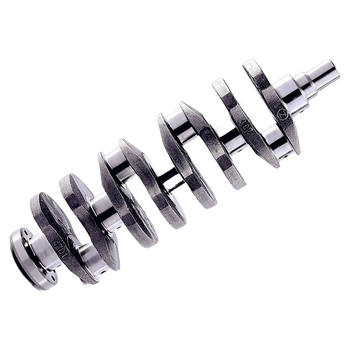The Unseen Challenge in Engine Performance
Have you ever wondered why your car's engine runs so smoothly, even at high speeds? It's all thanks to a little-known engineering solution: counterweighted crankshafts. You see, as an engine's crankshaft rotates, it generates forces that can cause unwanted vibrations. These vibrations not only make for an uncomfortable ride but also negatively impact the engine's performance and longevity. So, how do we tackle this issue? The answer lies in a clever design that uses counterweights to balance those forces and minimize vibrations.The Magic of Counterweights
Counterweights are masses added to the crankshaft to balance the forces created by the reciprocating parts of the engine, such as the pistons and connecting rods. By strategically placing these weights, engineers can ensure that the crankshaft rotates smoothly, with minimal vibration. The result? A smoother, more efficient, and longer-lasting engine.
Designing Counterweighted Crankshafts
Creating a counterweighted crankshaft is no small feat. Engineers must consider various factors, including the engine's size, power output, and intended application. In many cases, computer simulations are used to determine the optimal size, shape, and placement of the counterweights. This process ensures that the crankshaft is perfectly balanced, allowing the engine to run as smoothly and efficiently as possible.
The Benefits of Counterweighted Crankshafts
The most obvious benefit of counterweighted crankshafts is vibration reduction. By minimizing vibrations, these crankshafts improve engine performance, increase fuel efficiency, and extend the lifespan of the engine's components. Additionally, reduced vibrations lead to a more comfortable ride for the vehicle's occupants.
Applications of Counterweighted Crankshafts
Counterweighted crankshafts are used in a wide range of engines, from small, single-cylinder engines found in lawnmowers to massive, multi-cylinder engines used in heavy-duty trucks and construction equipment. In fact, any engine that requires a smooth, efficient operation can benefit from a counterweighted crankshaft.
Practical Applications and Tips
Now that you understand the importance of counterweighted crankshafts, let's explore some practical applications and tips:
- When designing or selecting an engine, consider the benefits of a counterweighted crankshaft, especially if vibration reduction, improved performance, or increased longevity are important factors.
- If you're experiencing excessive vibrations in an existing engine, have it inspected by a professional. The issue may be related to an imbalance in the crankshaft's counterweights.
- When maintaining or repairing an engine, ensure that the crankshaft's counterweights are correctly balanced. This can be done using specialized equipment, such as a crankshaft balancer.
In Conclusion: Smoother Engines, Happier Rides
In my experience, counterweighted crankshafts are truly an engineering marvel. They play a crucial role in ensuring that engines run smoothly, efficiently, and with minimal vibrations. So, the next time you're enjoying a comfortable ride in your car or marveling at the power of heavy machinery, take a moment to appreciate the humble counterweighted crankshaft – the unsung hero of engine performance.
What's Next?
Now that you understand the importance of counterweighted crankshafts, why not explore other engineering solutions that improve engine performance? From advanced materials to innovative designs, there's a world of fascinating technologies out there, just waiting to be discovered. Happy learning!




